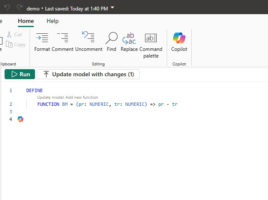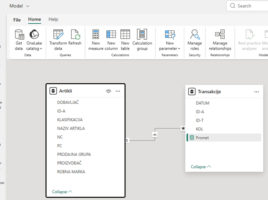
User-defined DAX functions
The DAX statement language, which we use to add new reporting dimensions to the Semantic Model, whether they are measures or calculated columns, or we use it to create tables, has a large number of functions. However, sometimes users need to create their own functions, and recently they can do it in a simple way, most often through DAX query view.




